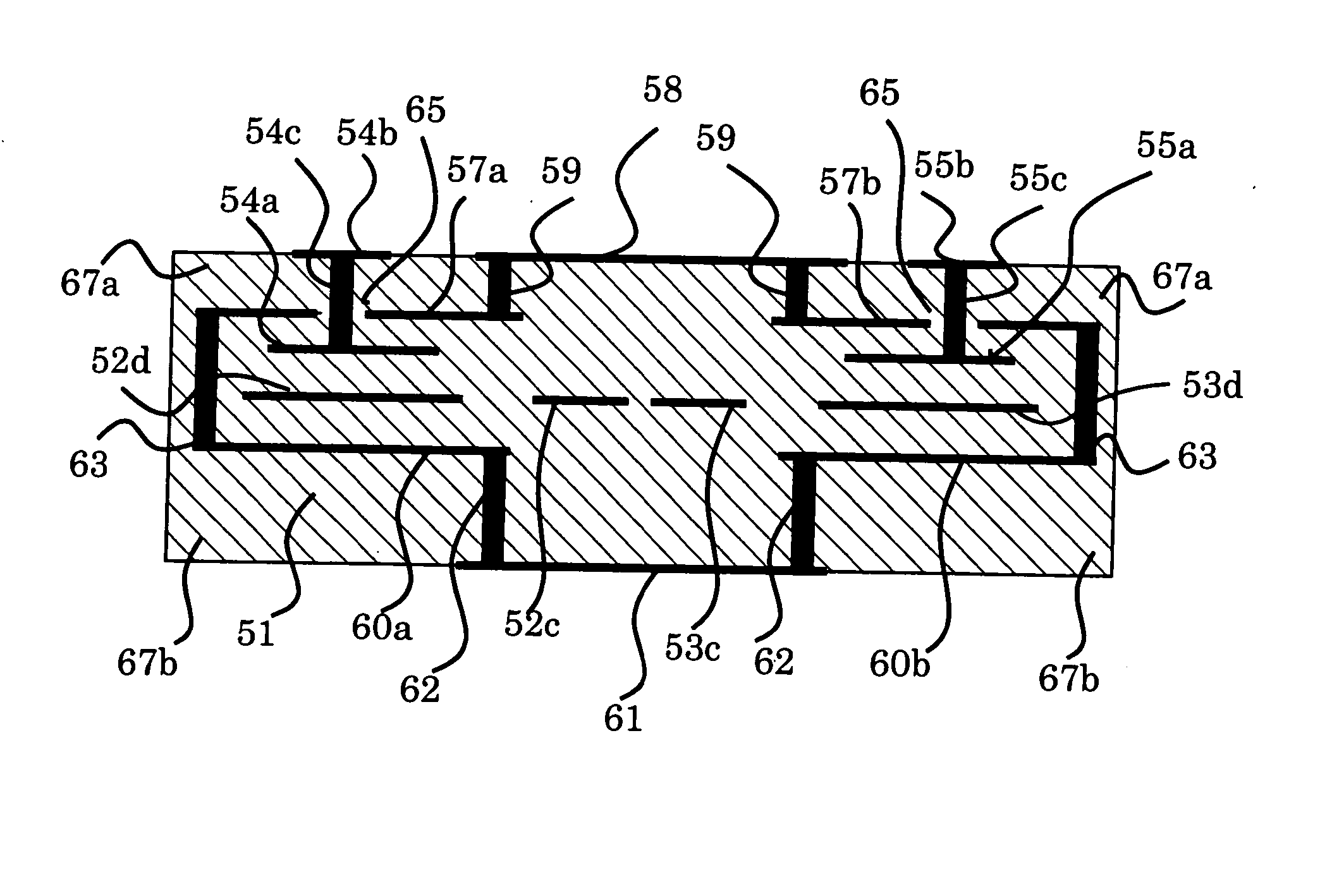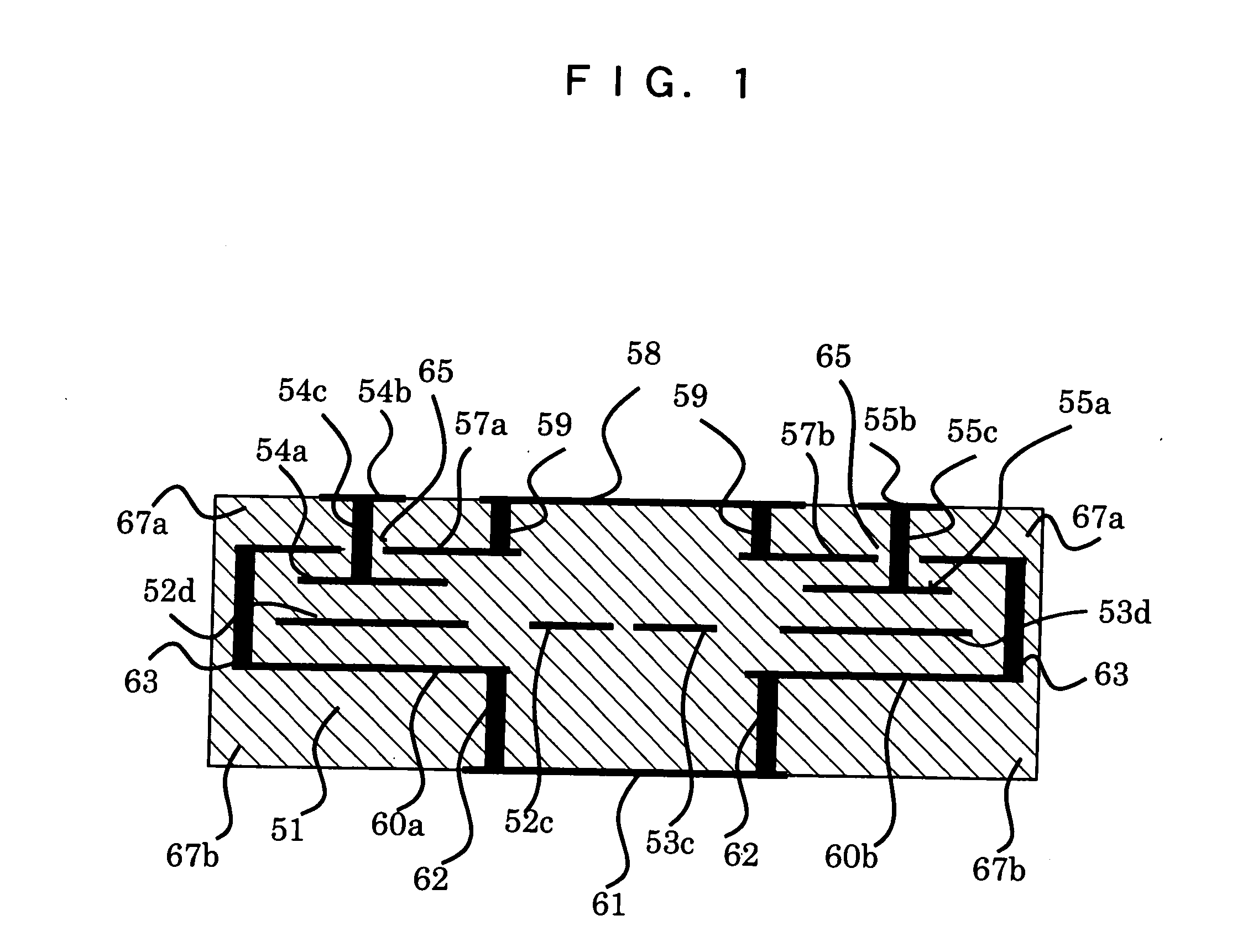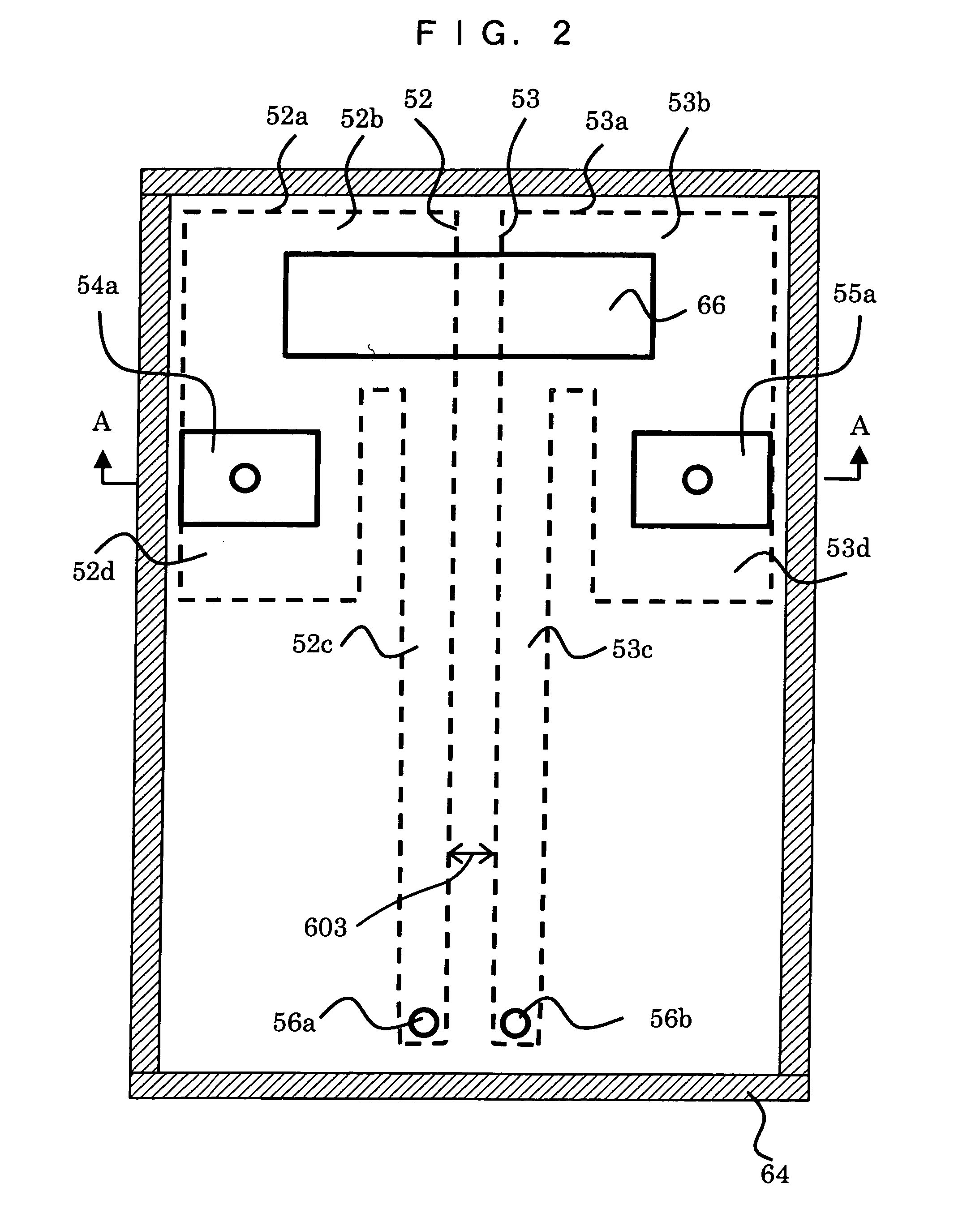Dielectric filter
- Summary
- Abstract
- Description
- Claims
- Application Information
AI Technical Summary
Benefits of technology
Problems solved by technology
Method used
Image
Examples
embodiment 1
[0054] As shown in FIGS. 1 and 2, a dielectric filter of Embodiment 1 is constituted of first and second resonant elements 52 and 53 each of which is formed in the inner layer of a dielectric substrate 51 and has one open end and the other end connected to the ground via inner vias 56a and 56b, wide portions 52b and 53b which electromagnetically couple the first and second resonant elements 52 and 53 and are formed on the sides of open ends 52a and 53a, narrow portions 52c and 53c formed on the side of a side electrode (a common ground terminal, i.e., the ground) 64 of the first and second resonant elements 52 and 53, bent portions 52d and 53d bent like letter L from the ends of the wide portions 52b and 53b to the side electrode 64, first and second input / output electrodes 54a and 55a formed in the upper layer of the bent portions 52d and 53d, input / output terminals 54b and 55b drawn from the input / output electrodes 54a and 55a, a capacitive electrode 66 formed in the upper layer o...
embodiment 2
[0077]FIG. 8 is a plan view showing a dielectric filter according to Embodiment 2.FIG. 10 is a sectional view taken along line A-A of FIG. 8. FIG. 11 is a sectional view taken along line B-B of FIG. 8. FIG. 12 is an equivalent circuit diagram of FIG. 8. The same constituent elements as Embodiment 1 will be indicated by the same reference numerals and the explanation thereof is simplified.
[0078] Embodiment 2 is different from Embodiment 1 in that two capacitive electrodes 91 and 92 are provided and one ends of the electrodes are directly connected to resonant elements 52 and 53 via inner vias 91a and 92a, respectively. In FIGS. 8, 10, and 11, the capacitive electrode 91 is disposed in the upper layer of a wide portion 53b so as to face a wide portion 52b. The capacitive electrode 91 is directly connected, on the side of the wide portion 53b, to the wide portion 53b via the inner via 91a. Further, the capacitive electrode 92 is disposed in the lower layer of the wide portion 52b so a...
embodiment 3
[0088]FIG. 13 is a sectional view showing a dielectric filter according to Embodiment 3. The dielectric filter of Embodiment 3 is different from Embodiments 1 and 2 in that a ground electrode 166 is provided between input / output electrodes 157a and 158a as shown in FIG. 14. Thus, in the present embodiment, isolation improves between the input / output electrodes 157a and 158a. Further, in the present embodiment, narrow portions 160c and 161c are bent and miniaturized.
[0089] To be specific, as shown in FIG. 13, the dielectric filter of the present embodiment is constituted of a ground electrode 153 provided in a first layer 152 of a dielectric substrate 151, a resonator electrode 155 which is stacked above the ground electrode 153 and provided in a second layer 154, input / output electrodes 157a and 158a which are stacked above the resonator electrode 155 and provided in a third layer 156, and a ground electrode 159 which is stacked above the input / output electrodes 157a and 158a and p...
PUM
 Login to View More
Login to View More Abstract
Description
Claims
Application Information
 Login to View More
Login to View More - Generate Ideas
- Intellectual Property
- Life Sciences
- Materials
- Tech Scout
- Unparalleled Data Quality
- Higher Quality Content
- 60% Fewer Hallucinations
Browse by: Latest US Patents, China's latest patents, Technical Efficacy Thesaurus, Application Domain, Technology Topic, Popular Technical Reports.
© 2025 PatSnap. All rights reserved.Legal|Privacy policy|Modern Slavery Act Transparency Statement|Sitemap|About US| Contact US: help@patsnap.com



